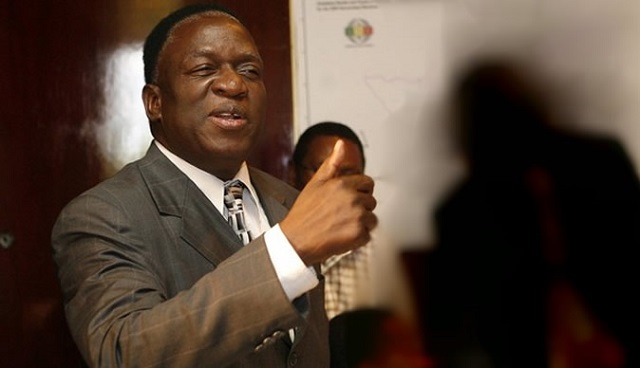Let’s come to Tanzania’s aid

Saul Gwakuba Ndlovu
A strong earthquake recently rocked a Tanzanian region in which is the Lake Victorian town of Bukoba, and the historically famous Kagera Sector where the Tanzanian-Ugandan war of the late 1970s started, resulting in the ignominious defeat of the universally discredited General Idi Amin “Dada’’.
Although Bukoba was not massively destroyed by the shaking geological phenomenon, it damaged quite a large part of the region and killed at least 13 people, injuring an unknown number, and caused as yet an unquantified damage to houses and other properties.
Earthquakes can be defined as convulsions of the earth’s superficial parts and are caused by the release of accumulated stress. They are created by the structural faults of volcanic action. Some earth’s regions are more prone to earthquakes than others. That is because they are structurally unstable, and lie along what students of the movement of the earth’s crust (seismologists) call the “seismic belts”.
The word “seismic” is derived from the Greek word seismos which means movement.
Seismic belts stretch northwards along the west American coast from the southern tip of Chile past San Francisco right up to the town of Whitehorse in north-western Canada.
Inland along that belt we find active volcanoes such as Chimborazo, Cotopaxi, Popocatapetyl and several others that are less well known.
Earthquakes and volcanoes tend to occur in the same region.
The seismic belt occurs also in the Pacific Ocean, several hundreds of kilometres to the west of the American coast. In the Atlantic Ocean, it runs half-way through that ocean right up to the Arctic region in the frigid north.
In the southern hemisphere, it is several thousands of kilometres south of Cape Agulhas, South Africa, but it turns eastwards and passes between the Indian sub-continent and Madagascar.
It then turns to the Persian Gulf, enters the Gulf of Eden and follows the Red Sea and enters the Mediterranean with some of its arms spreading into the Maghreb states of North Africa, then into the Iberian Peruvian Peninsula, France, parts of western Europe, and then eastwards into China, Japan and other countries of the Far East.
It does not occur in Australia, however, but passes through New Zealand.
In Africa, it creeps into the east African region but peters out towards Lake Malawi. In the west-African region, there are dormant volcanic localities in countries such as Cameroon.
Uganda lies within a region fractured by earthquakes millions of years ago, and one of its ranges, the Virunga Mountains, is volcanic. Between it and its southern southwestern and southeastern neighbour, Tanzania, is Lake Victoria, an obvious creation of the earth’s movements in ancient times.
Bukoba is on the shores of Lake Victoria in Tanzania’s northwestern districts in a region that is a part of the geographically famous Great Rift Valley, with this particular area being in the western part of that region.
The region is characterised by a number of lakes, and is referred to as the Great Lakes region. Like Lake Victoria, the lakes are without doubt creations of the earth’s movements in some historically distant past. We can thus reasonably conclude that the recent quake was a typical geographical phenomenon of that region in geomorphological terms.
However, whatever its cause, and, however, it occurred, what should concern us all in this part of Africa is how best to assist Tanzania to recover from the tragedy.
That would be an opportunity to show practically the meaning of our national philosophy of ubuntu, a value that is described by the biblical quotation: “Do unto others as you would them do unto you.” That quotation is believed to have been originally used by the Hindus from whom the Hebrews adopted it.
To us, the people of Zimbabwe, Tanzania is a special country because of the incomparable sacrifices they made to free Zimbabwe from colonialism.
They offered their territories to freedom fighters to enable them to receive aid from various progressive nations.
Not only that, they offered the freedom fighters their ground for military training, and some of their, by then, few educational facilities to freedom fighters to train as civil administrators.
Tanzania stood solidly shoulder-to-shoulder with freedom fighters from Zimbabwe, Mozambique, Namibia, Angola, Guinea Bissau, the Comoros and South Africa. Its leader, Dr Julius Kambarage “Mwalimu” Nyerere was a Pan-Africanist who stood for the liberation of the entire African continent whatever the cost, as were all Tanzanians.
Tanzania is not rich, not by any standard, regional, continental or universal. Now that it is facing this natural calamity, may all those countries whose liberation was made possible by its selflessness come to its aid.
That would be a good example of the proverbial saying “a good turn deserves another”.
If each, or even some, of the now free countries were to give that truly African nation a million or so dollars it can rebuild the houses and whatever else was destroyed by the earthquake.
Government-sponsored national fundraising campaigns can be launched in Mozambique, Zimbabwe, Angola, Namibia, South Africa and Guinea Bissau and the Comoros, and whatever is raised in a month or so can be handed over by the respective countries’ foreign ministry officials to the accredited Tanzanian diplomatic representatives.
Saul Gwakuba Ndlovu is a retired, Bulawayo-based journalist. He can be contacted on cell 0734 328 136 or through email [email protected]









Comments